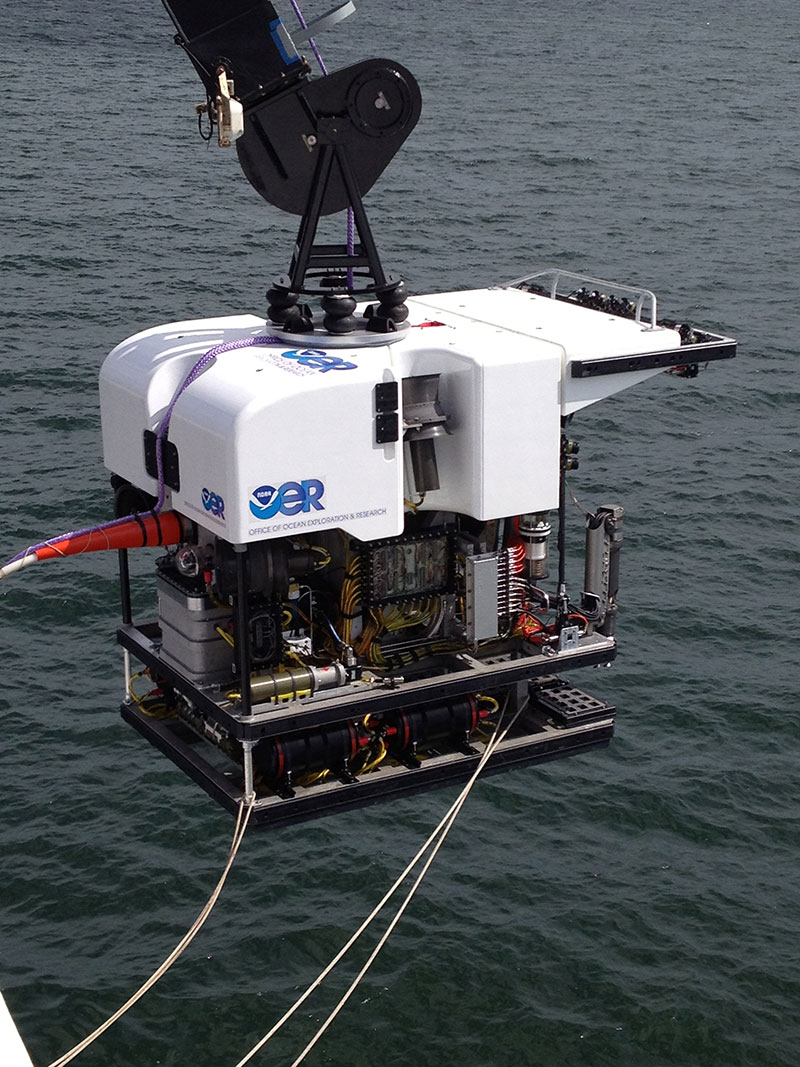The Office of Ocean Exploration and Research’s new 6,000-meter-rated
Deep Discoverer remotely operated vehicle (ROV) was brought online for engineering trials this past May, and will be used in a telepresence-enabled ocean exploration for the first time during the Northeast U.S. Canyons Expedition. The ROV was named after the retired NOAA Ship
Discoverer that operated in the Arctic, Antarctic, Pacific, and Atlantic basins and conducted surveys and research ranging from undersea vents to aerosol characterization, leaving a vast and wide legacy including data that continues to be used by scientists today. Similarly,
Deep Discoverer is expected to go places others have not and provide a legacy of data that will provide value to the science and management communities by doing what it does best – making discoveries.
Download larger version.
